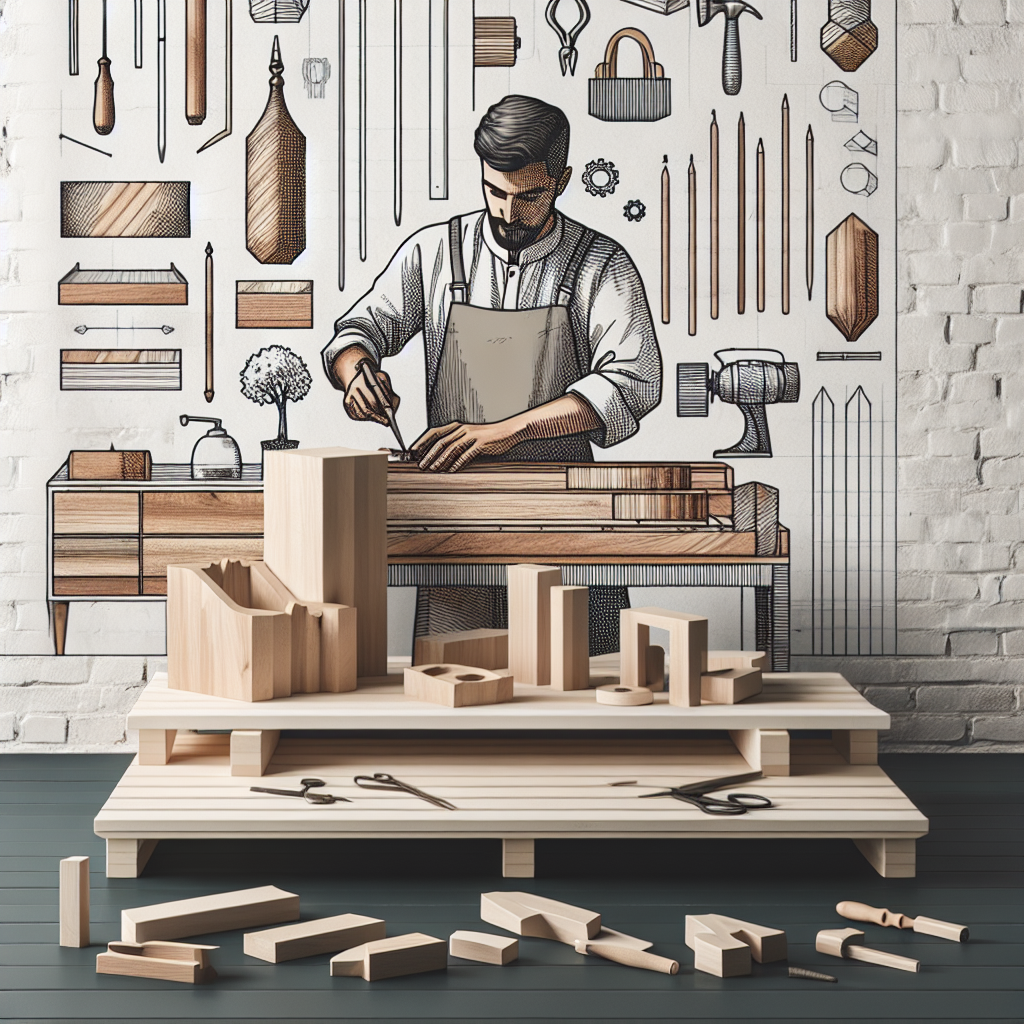Crafting Minimalist Furniture from Reclaimed Materials: A Comprehensive Guide
Understanding Minimalist Furniture Design
Minimalist furniture embodies the essence of ‘less is more.’ Characterized by clean lines, simple forms, and a functional approach, minimalist design emphasizes quality over quantity. Crafting such furniture using reclaimed materials not only enhances sustainability but also introduces unique character and history into each piece.
Reclaimed Materials: What You Need to Know
Reclaimed materials are resources salvaged from old structures, discarded items, or repurposed products. They can range from wood beams from a barn to metal scraps from industrial sites. Common types of reclaimed materials include:
-
Wood: Often sourced from old furniture, flooring, pallets, and even shipping crates. Reclaimed wood brings warmth and a narrative to minimalist designs.
-
Metal: Items such as pipes, old machinery, or even furniture frames offer durability and a raw aesthetic. Metal can be treated, painted, or left with its original patina to achieve different looks.
-
Glass: Reclaimed glass can be transformed into tabletops or decorative elements, adding an elegant touch to minimalist designs.
-
Textiles: Salvaged fabrics from old clothes or furniture can be reupholstered into simple seating solutions.
Benefits of Using Reclaimed Materials
-
Sustainability: Utilizing reclaimed materials reduces waste and the demand for new resources, contributing to ecological preservation.
-
Uniqueness: Each reclaimed piece carries its own history, ensuring that your furniture is one-of-a-kind.
-
Cost-Effective: Often, reclaimed materials are less expensive than new ones, allowing creators to produce high-quality furniture on a budget.
-
Character and Charm: Reclaimed materials add a distinctive personality to minimalist furniture, which can evoke stories and emotions through their previous lives.
Essential Tools and Techniques
Before beginning your project, having the right tools is crucial. Here’s a list of essential tools for crafting minimalist furniture:
-
Measuring Tape: For accurate dimensions.
-
Circular Saw: For cutting wood and other materials to size.
-
Screwdriver and Drill: To assemble pieces securely.
-
Sander: For smoothing surfaces and finishing edges.
-
Wood Glue: To ensure sturdy joints.
-
Paint and Finishing Supplies: Non-toxic paints or oils enhance the finish while being environmentally friendly.
Step-by-Step Crafting Process
-
Gathering Materials: Visit local salvage yards, flea markets, abandoned sites, or even online marketplaces to search for reclaimed materials. Look for items that are structurally sound and fit your envisioned design.
-
Designing Your Furniture: Sketch out your ideas. Minimalist designs often include functional statements, so consider both aesthetics and utility.
-
Preparing Materials: Clean and inspect all reclaimed materials for rot, damage, and nails. Use a sander to smooth out rough edges and surfaces, and treat any wood for pests and protection.
-
Assembling the Frame: Start with the frame of the furniture. For example, if crafting a table, join the legs to the tabletop using screws and wood glue, ensuring a stable structure.
-
Adding Functional Elements: If you’re making a chair, add a seat and backrest, while ensuring adequate support is provided through cross beams or bracing techniques.
-
Finishing Touches: Sand the surfaces thoroughly, then apply a non-toxic finish or paint to enhance durability or aesthetics. Choose matte or natural finishes for a more minimalist aesthetic.
-
Final Assembly: Once the finishes are dry, conduct a final assembly to ensure all parts are secure and aligned perfectly.
Maintaining Your Reclaimed Furniture
Maintaining furniture crafted from reclaimed materials is essential for longevity:
-
Regular Cleaning: Use a damp cloth for wood surfaces and appropriate cleaners for metal or glass.
-
Avoid Excess Water: Particularly for wood, excess moisture can lead to warping or damage.
-
Temperature and Moisture Control: Keep furniture away from extreme heat sources or humidity to preserve integrity.
Incorporating Minimalist Principles
When arranging your space, incorporate minimalist principles by allowing each reclaimed piece to stand out. Consider:
-
Negative Space: Leave room around furniture to give the effect of more space, allowing the character of each piece to shine through.
-
Functionality: Use multi-functional furniture that serves a purpose without cluttering the space.
-
Natural Light: Position reclaimed furniture near windows to enhance natural light, emphasizing its textures and hues.
Conclusion
Crafting minimalist furniture from reclaimed materials requires a passion for creativity and sustainability. By understanding the principles of minimalist design and the unique characteristics of reclaimed resources, you can create stunning, functional pieces that make a statement while respecting the environment. The process not only provides practical benefits but also allows for creative expression, bringing history into modern living spaces.
